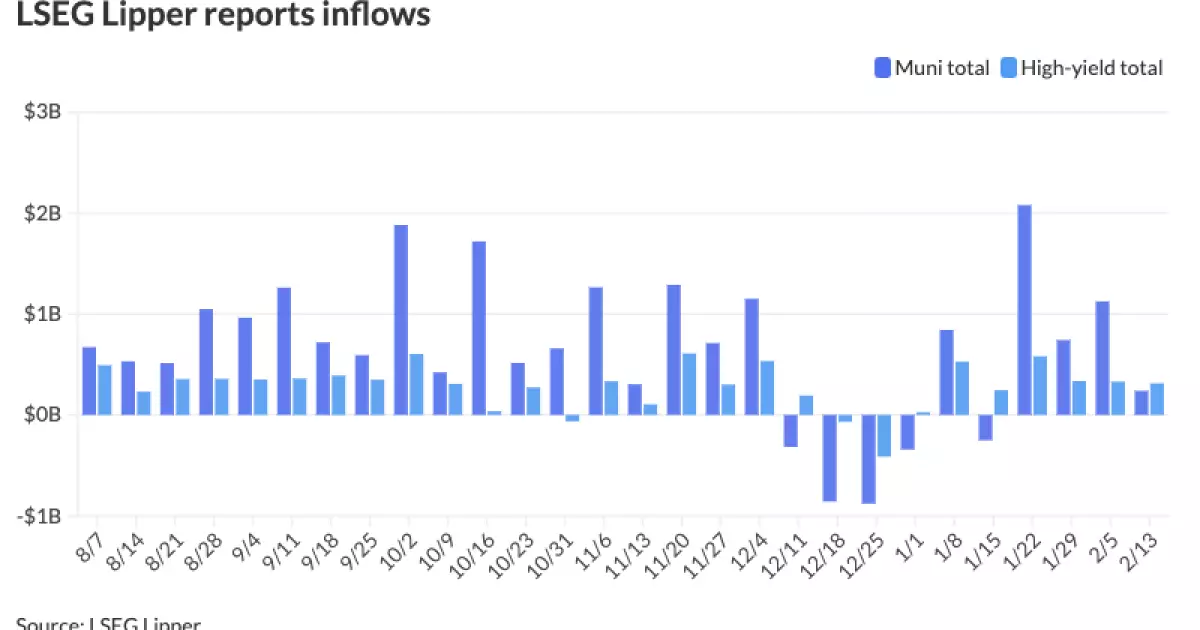As we navigate the complex world of finance, the municipal bond market stands as a vital component of the broader investment landscape. Recent trends illustrate stability and growth, even amidst shifting economic policies and market fluctuations. This article delves into the current state of the municipal bond market, the impact of U.S. Treasury yields and various investing strategies, as well as the underlying dynamics shaping investor behavior.
Recent reports indicate an uptick in municipal bond performance, particularly characterized by firmer municipal yields. The rise in U.S. Treasury yields has positively influenced municipal bonds, with ratios exhibiting encouraging stability. Specifically, the two-year municipal bond to UST ratio hovering around 63% and the 30-year ratio reaching 86% demonstrates a favorable climate for investors. Industry experts highlight the steadfast nature of the municipal market, particularly in the face of policy uncertainties stemming from Washington. This adaptability signals a crucial resilience that suggests state and local governments’ capacity to underwrite debt effectively, even through challenging economic circumstances.
James Welch, a municipal portfolio manager at Principal Asset Management, articulates this sentiment, noting that the municipal market has efficiently navigated through periods of economic disruption, including tariff concerns and budget negotiations. The assurance that municipalities have historically found ways to cope with macroeconomic shifts adds a layer of confidence for investors working within this space. The ability of the municipal market to absorb new issuances while maintaining performance serves as a testament to its robustness.
An intriguing aspect of the current municipal landscape is the consistent flow into municipal bond mutual funds. Recent data reveals significant inflows into these funds, suggesting a strong investor appetite despite the challenges posed by varying federal monetary policies. For instance, the reported inflows of nearly $238.5 million into municipal bond mutual funds in a recent week further emphasizes this trend. High-yield funds, in particular, are seeing substantial participation, reinforcing the notion that risk-tolerant investors continue to explore opportunities within the municipal bond sector.
Moreover, fund flows have exhibited a steady trajectory since the end of 2023, indicating a bullish outlook for the municipal market. Encouraging growth in high-yield inflows, which accounted for a large portion of the total, signals a healthy demand and belief in future performance. Welch’s assertion that retail investments, through diverse platforms such as ETFs and separate managed accounts, will remain strong captures the evolving nature of investing as municipalities adapt to a landscape with declining federal funds.
Despite a positive outlook for the municipal market, challenges remain at the forefront of issuer considerations. As states and localities confront “deferred maintenance” issues, the realization that pandemic-induced funding has dwindled necessitates a shift towards alternative sources of financing. The uptick in year-to-date issuance, which has surged over 12.5% compared to the previous year, underscores this urgent need for municipalities to procure funds to finance essential projects. As municipalities seek to rejuvenate aging infrastructures and explore new initiatives, the municipal market becomes an increasingly attractive destination for capital allocation.
The influx of new issuance amidst a pressing need for funding illustrates a delicate balance between opportunity and risk for investors. Understanding the macroeconomic environment and the specific needs of prospective issuers will be critical as investors navigate this evolving landscape.
In tandem with the growing market dynamics, technology plays a transformative role in municipal bond trading. The rise of e-trading platforms has revolutionized the way transactions are conducted, streamlining processes and enhancing accessibility for a broader range of investors. With average daily trade volumes rebounding, traders are capitalizing on new efficiencies brought about by advancements in electronic trading. This trend has not only made the market more robust but has also attracted high-net-worth individuals who traditionally had limited access.
The projected growth of separately managed accounts (SMAs), which enable automated portfolio management, highlights a shift towards a tech-driven approach to investment. As observed, e-trading now accounts for a significant portion of notional trading volume, showcasing investor readiness to embrace innovative investment solutions that promise efficiency and ease.
As we look forward, the municipal bond market presents a mixed bag of opportunities and challenges for investors. Growing demand against a backdrop of heightened fiscal need, combined with technological changes shaping trading practices, sets the stage for an intriguing future. The robustness of the municipal market underscores its essential role in financing infrastructure and community projects, while issuers must effectively navigate funding complexities stemming from previous policies.
Investors must remain vigilant and informed, recognizing the complexities introduced by evolving economic conditions and policy shifts. Adaptive strategies focusing on high-yield sectors and leveraging technological advancements will be pivotal in realizing successful investment outcomes in the vibrant and ever-evolving world of municipal bonds.

